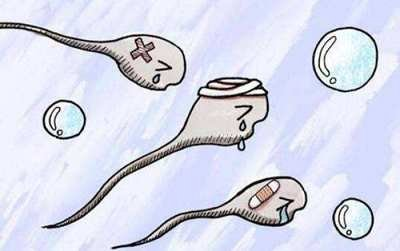Can Chronic Prostatitis Cause Asthenospermia? Understanding the Link
Some of the men who have weak asthenospermia also have chronic prostatitis. As a result, these men connect the two, believing that the latter causes the former. Is this true?

Generally speaking, patients with chronic prostatitis will have their semen quality affected due to long-term inflammation, leading to decreased sperm motility, which is manifested as asthenospermia. This is because 30% of semen is prostate fluid. When the prostate fluid is abnormal, it can lead to an increase in semen viscosity, which manifests itself as a prolonged semen liquefaction time, mainly because the semen liquefaction enzyme is affected.
The large number of sperm in semen can only start moving freely when the semen liquefies. Inflammation leads to non-liquefaction of semen, and the sperm cannot move and are bound, leading to decreased sperm motility and asthenospermia.
Ruling out other factors, if chronic prostatitis is considered to have affected the quality of sperm, leading to asthenospermia, the patient can treat the inflammatory disease first and then observe the improvement of semen quality after the inflammation is controlled. Traditional Chinese medicine has accumulated thousands of years of methods and experience in treating prostatitis.
Diuretic and Anti-inflammatory Pill draws on these methods and experiences and, through rich clinical practice experience, improves the formula so that the drug can comprehensively regulate the patient's genitourinary system. At the same time, it also has anti-inflammatory and antiseptic properties, effectively improving the patient's immunity thus eradicating the disease.
In addition, what other factors can lead to asthenospermia?
1. Immunologic Factors: In the male immune system, too high antibodies are detrimental to sperm growth. For example, anti-sperm antibodies (AsAb) cause a decrease in sperm quality, and the effect on sperm viability comes from the binding of the AsAb to the tail of the sperm. Sperm viability is impeded, motility is reduced, and penetration is relatively poor, resulting in asthenospermia.
2. Endocrine Factors: Besides their role in sperm production and maturation, endocrine hormones also affect sperm motility. Among them, too much testosterone in seminal plasma will inhibit sperm motility, thus causing low sperm motility.
3. Reproductive Infections: Acute and chronic inflammation of the reproductive tract or reproductive glands, such as the epididymis, testicles, vas deferens, and seminal vesicles, can also cause this symptom.
4. Abnormal Semen Liquefaction: Semen that is not liquefied or has a high viscosity will restrict the free movement of sperm. In the seminal plasma of non-liquefied semen, elongated fibrous proteins can be seen and interweave with each other so that the space for sperm to move is reduced, and the sperm are held back, with insufficient vitality and reduced quality, which affects the sperm's ability to move.
5. Varicocele: It can lead to male infertility in several ways, not only by affecting spermatogenesis but also by causing a decrease in sperm viability. The mechanism may be due to blood stagnation in the varicose veins, microcirculatory disorders, lack of nutrient supply and reduced partial pressure of oxygen, insufficient energy production, and endocrine dysfunction.
6. Other Factors: Poor lifestyle habits, such as smoking, long-term alcohol consumption, staying up late, sauna, hot baths, electric blankets, etc., as well as men engaged in high temperature, radiation occupations, and exposure to chemical toxins can cause a decrease in sperm motility, which can lead to symptoms.
Therefore, maintaining a healthy lifestyle, protecting themselves from environmental pollution, and treating diseases in time are effective measures to prevent asthenospermia in men. Men should start from the cause and take symptomatic treatment measures. In addition, regular fertility checkups, such as semen analysis, are also one of the effective measures to detect problems early and treat them promptly.
You may also be interested in:
How Often is the Best Interval to Ejaculate for Treating Prostatitis?
Asthenospermia in Men's Reproductive Years: Can I Still Be a Father?



